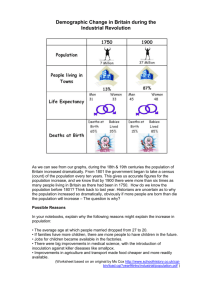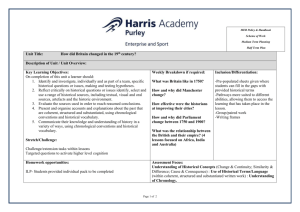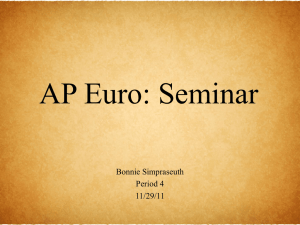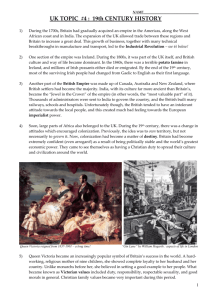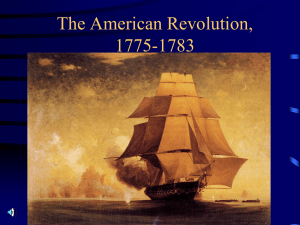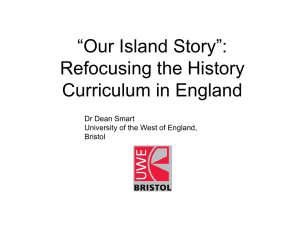Industrial Revolution
advertisement
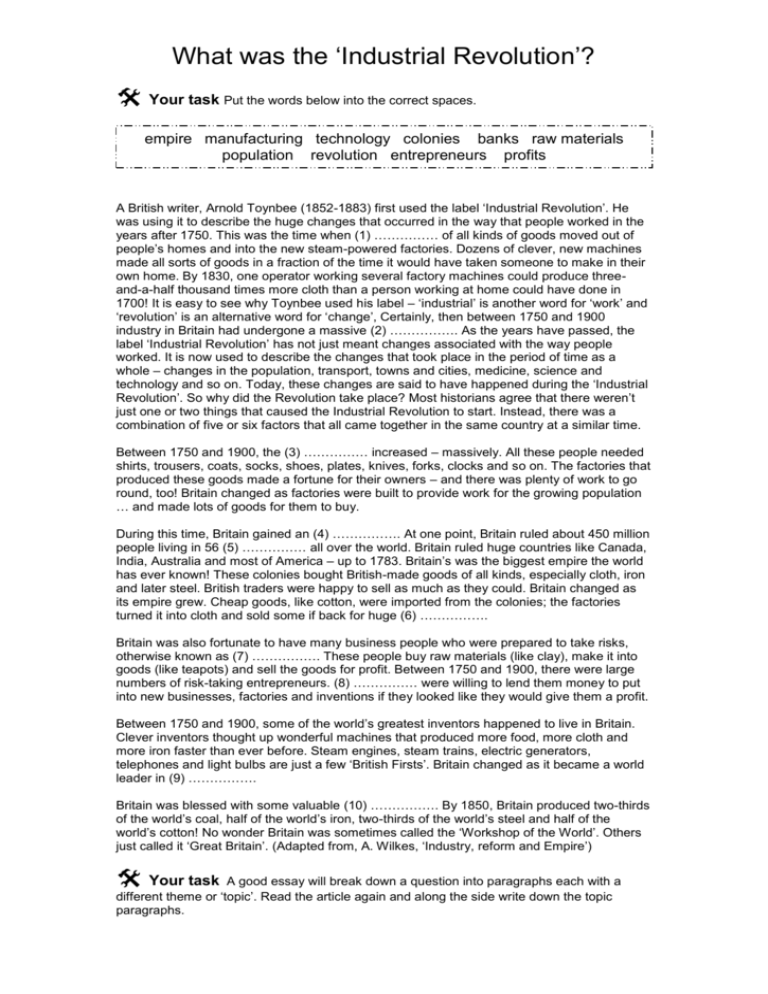
What was the ‘Industrial Revolution’? Your task Put the words below into the correct spaces. empire manufacturing technology colonies banks raw materials population revolution entrepreneurs profits A British writer, Arnold Toynbee (1852-1883) first used the label ‘Industrial Revolution’. He was using it to describe the huge changes that occurred in the way that people worked in the years after 1750. This was the time when (1) …………… of all kinds of goods moved out of people’s homes and into the new steam-powered factories. Dozens of clever, new machines made all sorts of goods in a fraction of the time it would have taken someone to make in their own home. By 1830, one operator working several factory machines could produce threeand-a-half thousand times more cloth than a person working at home could have done in 1700! It is easy to see why Toynbee used his label – ‘industrial’ is another word for ‘work’ and ‘revolution’ is an alternative word for ‘change’, Certainly, then between 1750 and 1900 industry in Britain had undergone a massive (2) ……………. As the years have passed, the label ‘Industrial Revolution’ has not just meant changes associated with the way people worked. It is now used to describe the changes that took place in the period of time as a whole – changes in the population, transport, towns and cities, medicine, science and technology and so on. Today, these changes are said to have happened during the ‘Industrial Revolution’. So why did the Revolution take place? Most historians agree that there weren’t just one or two things that caused the Industrial Revolution to start. Instead, there was a combination of five or six factors that all came together in the same country at a similar time. Between 1750 and 1900, the (3) …………… increased – massively. All these people needed shirts, trousers, coats, socks, shoes, plates, knives, forks, clocks and so on. The factories that produced these goods made a fortune for their owners – and there was plenty of work to go round, too! Britain changed as factories were built to provide work for the growing population … and made lots of goods for them to buy. During this time, Britain gained an (4) ……………. At one point, Britain ruled about 450 million people living in 56 (5) …………… all over the world. Britain ruled huge countries like Canada, India, Australia and most of America – up to 1783. Britain’s was the biggest empire the world has ever known! These colonies bought British-made goods of all kinds, especially cloth, iron and later steel. British traders were happy to sell as much as they could. Britain changed as its empire grew. Cheap goods, like cotton, were imported from the colonies; the factories turned it into cloth and sold some if back for huge (6) ……………. Britain was also fortunate to have many business people who were prepared to take risks, otherwise known as (7) ……………. These people buy raw materials (like clay), make it into goods (like teapots) and sell the goods for profit. Between 1750 and 1900, there were large numbers of risk-taking entrepreneurs. (8) …………… were willing to lend them money to put into new businesses, factories and inventions if they looked like they would give them a profit. Between 1750 and 1900, some of the world’s greatest inventors happened to live in Britain. Clever inventors thought up wonderful machines that produced more food, more cloth and more iron faster than ever before. Steam engines, steam trains, electric generators, telephones and light bulbs are just a few ‘British Firsts’. Britain changed as it became a world leader in (9) ……………. Britain was blessed with some valuable (10) ……………. By 1850, Britain produced two-thirds of the world’s coal, half of the world’s iron, two-thirds of the world’s steel and half of the world’s cotton! No wonder Britain was sometimes called the ‘Workshop of the World’. Others just called it ‘Great Britain’. (Adapted from, A. Wilkes, ‘Industry, reform and Empire’) Your task A good essay will break down a question into paragraphs each with a different theme or ‘topic’. Read the article again and along the side write down the topic paragraphs.
